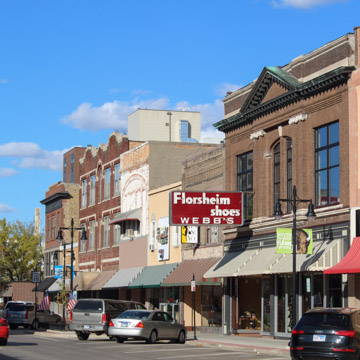Aberdeen was first platted in 1881 by Charles Prior, superintendent of the Milwaukee, St. Paul and Pacific Railroad, and named for the Scottish hometown of company president Alexander Mitchell. By 1886, nine different rail lines converged on Aberdeen from all directions, making it the regional commercial center for northeastern South Dakota and earning it the nickname Hub City. Aberdeen quickly became the third largest city in the state, and the seat of Brown County in 1890. With this growth came a thriving downtown commercial core along Aberdeen’s Main Street between Railroad Avenue on the north and Sixth Avenue on the south.
The oldest surviving building dates to 1884, but the majority of development occurred in the early twentieth century, after recovery from the Panic of 1893 and prior to the Great Depression. With the exception of the Masonic Temple (1899) and a seven-story apartment building (1981), the buildings housed commercial and business enterprises. The commercial core consists of one- to four-story brick buildings with a uniform setback from the street. The cohesive group exhibits similar architectural detailing such as corbelling and geometric brick as well as concrete patterning. Many buildings were likely constructed by local builders using pattern books, but some have identified architects, mainly Minnesota firms such as Ellerbe and Company, Kenneth Fullerton, Beuchner and Roth, and Kinney and Detweiler. The structures are typical of turn-of-the-century commercial buildings, and feature Classical and Romanesque detailing. The 1920s brought national chain stores to Aberdeen, including J.C. Penney and Kresge. The five-story, Art Deco Capitol Theatre opened in 1927, and served as the city’s motion picture theater until 1990. The Aberdeen Community Theatre converted the building to house both movies and live theater, and restored the marquee in 1997.
The commercial core continues to thrive, particularly because Aberdeen remains one of the largest cities in rural South Dakota.

